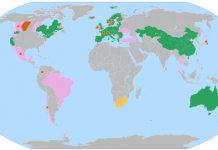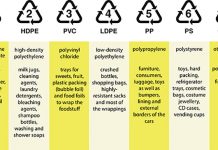In a May 8 post I opined that, although I believed that recent developments on the climate change file in the US would bode well for Climate Exchange plc (CXCHF.PK), I thought that the stock was overpriced and had had too great a run for its own good over the past 3 months. I therefore predicted that the next move the stock would make would be to the downside. Climate Exchange was trading at around $28 then, and today it is trading in the neighborhood of $36. I continue to believe that this stock is going way too far, way to fast for what the fundamentals are telling us, no matter how much growth is forecasted to occur over the next couple of years. Nevertheless, a majority of market participants currently disagree with me, and that, in effect, makes me “wrong”. In the context of this, I thus thought I would share with you a series of emails I received shortly after I wrote the post by a regular reader who also happens to be following Climate Exchange very closely. I got the author’s permission to publish these but he will remain anonymous. Enjoy! Email 1: “Charles I read your latest post about the world of carbon….I wanted to bring to your attention a counter argument to consider about CLE….While you are correct to say that the chart looks extended, and that the valuation looks extreme considering the paltry cash flow number, you may be overlooking one very critical factor right now. There is deal mania right now in the world of exchange combinations….ICE and the Chicago Merc have been battling to buy Chicago Board of Trade, with Merc coming back with a very strong counteroffer this past week. The exchanges are all looking for growth opportunities at this time. Carbon trading represents the current “new new thing” on Wall Street. Volume in the EU trading scheme is exploding, with new participants joining the party. In fact, Citigroup announced last month the formation of a European carbon trading team, and they further pledged to spend $50 billion in conservation/environmental initiatives over the next decade. CLE represents a pure play on the growth of carbon trading in the EU. Meanwhile, CCX and CCFE (Chicago Climate Futures Exchange) are the clear marketplace leaders in the US in GHG trading….CCFE is THE exchange for SO2 trading, and their recently-listed NOx contract is off to a good start….CO2 trading on CCX is still slowly developing, but the prospects look good. Last year’s total volume traded was 10mm tons. Through mid-May, CCX has traded nearly 9mm tons. At this pace, CCX should trade roughly 25mm tons for 2007. While CCX volume is dwarfed by ECX, we all know that the US is a much larger potential CO2 marketplace if/when mandatory GHG trading regulations get enacted. So, ECX volume should continue to grow very strongly over the next several years, allowing CLE stock price to grow into its current valuation. In the meantime, the company’s fortunes will skyrocket if/when US legislation comes into play. Also, don’t forget that the company has several joint venture arrangements with foreign exchanges such as the Montreal and Mumbai ones to develop carbon trading platforms. So, the growth potential for CLE is quite abundant….And, growth is what investors (both stock market investors and corporate players) seek. Final thought for you to consider….ICE does the clearing of ECX trades, for which it receives approximately 28% of the revenues…So, while ICE may not have an equity investment in CLE, it truly does benefit from the growth at ECX. I believe they have a similar arrangement with CCX for clearing. So, you might be right that CLE stock is a bit overvalued. If the overall market landscape should experience a hiccup, CLE stock could have quite a fall….However, the underlying fundamentals of carbon trading are clearly bullish….CLE is the purest equity play on that theme. Don’t be surprised in the next 18 months if CLE gets mentioned in the M&A world as a potential buyout candidate….ICE bought the NY Board of Trade (a stodgy old exchange focused on coffee, sugar, etc.) for approximately $1 bn last year. The growth prospects for carbon trading has to dwarf those of coffee and sugar. ECX and CCX are already electronic marketplaces with no legacy costs to have to bear in order to convert them to electronic trading….ECX and CCX are both cyber markets today. No costly real estate or maintenance expenses… Just my two cents on an early Saturday morning.” Email 2: “Charles One more thing to consider about CCX right now. NYMEX made a splashy anncmt this past week how they want to introduce CO2 trading. Frankly, it shines the spotlight on the potential for growth in that sector here in the states. However, NYMEX cannot possibly hope to compete credibly with CCX at this time. If Congress and President Bush signed mandatory GHG legislation today, it would be 3 years before a program could be implemented and be ready for trading. That leaves the voluntary market as the only proxy to trade CO2 at the moment. If such momentum develops to want to trade voluntary CO2, CCX already has the contract in place. NYMEX cannot hope to create a voluntary contract because CCX will not license its CASH contract to NYMEX. NYMEX will be forced to create its own voluntary CASH market in order to trade CO2….CCX has spent nearly 4 years creating the rules, regulations, and auditing process to establish the market we see today….Because any scheme that NYMEX introduces will have to be voluntary (remember, no mandatory law), they will have to convince the large and growing members of CCX to abandon their successful market to come join theirs….I don’t think this is likely. It is a large undertaking to design and implement the rules and regs to establish the framework of a voluntary market. Moreover, CCX had the foresight to have their market be regulated by the NASD to alleviate concerns about the integrity of the market. Frankly, I think CCX represents an unimpeachable gold standard for the trading of voluntary CO2. Very little concern about the “carbon cowboy” issue that has recently wracked the voluntary market after the big FT series of articles several weeks ago. My conclusion…..The more that NYMEX highlights its desire to trade carbon, the more likely it is that smart investors are going to consider the competititve moat that CCX has firmly established in this arena. If voluntary CO2 trading markets begin to expand, CCX is poised to capture most, if not all, of that volume, in my view. One more thought….CCX recently has seen very strong growth in its membership ranks. Specifically, the class of members called “liquidity providers” has grown very nicely. I take special note that Lehman Brothers recently joined as a “liquidity provider”….Liquidity providers are those companies that join in order to trade the market…They make no commitment to lower their CO2 footprint in the way that regular members do when they join. My point is that Lehman is the first bulge bracket firm to join CCX as a liquidity provider….Goldman already owns 10+% of CLE. Wall Street is beginning to discover CLE and its family of exchanges. Bottom line….CLE has a very bright future, despite the possibility for some volatile short-term trading ahead.”






When Al Gore testified before congress a couple of months ago, he suggested cutting people’s income tax and replacing the lost revenue with a new pollution tax – I am guessing here that this would be a tax on gas, coal, avaition fuel, etc. This simple idea seems very appealing to me. It makes me ask – why do we need a complex exchange to trade carbon emissions, when we can accomplish the same goal by simply creating a new (revenue-neutral !!) tax? My main problem with the exchange is that it involves some sort of monitoring of energy plants, using inspectors, in order to maintain the integrity of the exchange. This seems problematic.